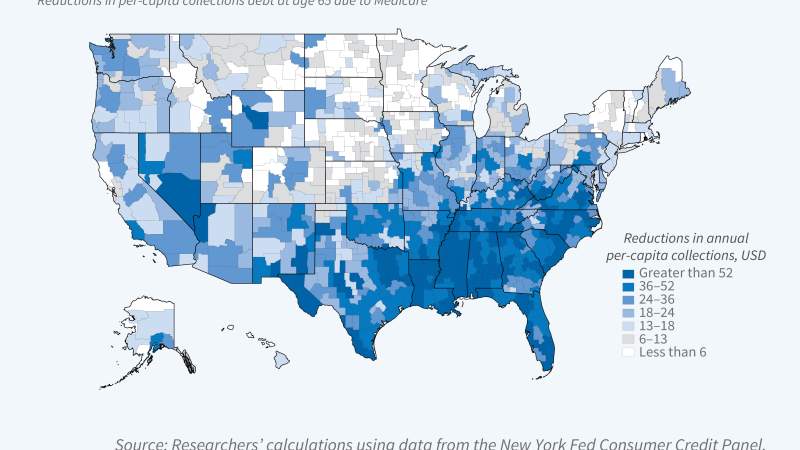Maxim Pinkovskiy
Federal Reserve Bank of New York
Contact
Address
Loding Complete
Explore Research
New This Week
Household surveys suffer from persistent and growing underreporting. We propose a novel procedure to adjust reported survey incomes for underreporting by estimating a model of misreporting whose main parameter of interest is the elasticity of regional national accounts income to regional survey...

July 3, 2023 - Article
There are large regional differences in the US in the prevalence of consumer financial distress as indicated by debt collection rates, bankruptcies, and low credit scores. In The Great Equalizer: Medicare and the Geography of Consumer Financial Strain (NBER Working Paper 31223), Paul Goldsmith...
We use a five percent sample of Americans credit bureau data, combined with a regression discontinuity approach, to estimate the effect of universal health insurance at age 65when most Americans become eligible for Medicareat the national, state, and local level. We find a 30 percent reduction in...
Nighttime lights data are a measure of economic activity whose error is plausibly independent of the measurement errors of most conventional indicators. Therefore, we can use nighttime lights as an independent benchmark to assess existing measures of economic activity (Pinkovskiy and Sala-i-Martin...
Concerns about the quality of Chinas official GDP statistics have been a perennial question in understanding its economic dynamics. We use data on satellite-recorded nighttime lights as an independent benchmark for comparing various published indicators of the state of the Chinese economy. Using the...
Nighttime lights data are a measure of economic activity whose error is plausibly independent of the measurement errors of most conventional indicators. Therefore, we can use nighttime lights as an independent benchmark to assess existing measures of economic activity (Pinkovskiy and Sala-i-Martin...
In this paper we try to understand whether national accounts GDP per capita or survey mean income or consumption better proxy for true income per capita. We propose a data-driven method to assess the relative quality of GDP per capita versus survey means by comparing the evolution of each series to...
The conventional wisdom that Africa is not reducing poverty is wrong. Using the methodology of Pinkovskiy and Sala-i-Martin (2009), we estimate income distributions, poverty rates, and inequality and welfare indices for African countries for the period 1970-2006. We show that: (1) African poverty is...
We use a parametric method to estimate the income distribution for 191 countries between 1970 and 2006. We estimate the World Distribution of Income and estimate poverty rates, poverty counts and various measures of income inequality and welfare. Using the official $1/day line, we estimate that...
Show: results